Corrosion of Silver-Plated Copper Conductors - NEPP
Corrosion of Silver-Plated Copper Conductors - NEPP
Corrosion of Silver-Plated Copper Conductors - NEPP
You also want an ePaper? Increase the reach of your titles
YUMPU automatically turns print PDFs into web optimized ePapers that Google loves.
Figure 8. Section through red crystals on the intact 2 - 3 μm thick<br />
silver coating on strand from corroded braid (x 600)<br />
316<br />
Programme to evaluate<br />
corrosion susceptibility <strong>of</strong><br />
wires and cables<br />
Figure 9. Colour micrograph clearly showing the various copper oxides to<br />
have ‘tunnelled’ beneath the silver coating. They are also present on the<br />
outer surface (x 600)<br />
Objectives<br />
A programme <strong>of</strong> work has been undertaken by ESA with the aim <strong>of</strong> understanding<br />
the phenomenon <strong>of</strong> red plague in greater detail. The basic mechanisms <strong>of</strong> corrosion<br />
presented in the literature have been described above, but a variety <strong>of</strong> factors still need<br />
to be resolved. The objectives <strong>of</strong> the programme include:<br />
a. To establish a database on the red-plague susceptibility <strong>of</strong> wire and cable products<br />
presently being supplied for ESA spacecraft projects.<br />
b. To develop and assess the test method described by Anthony & Brown 1-8 for the<br />
detection <strong>of</strong> susceptible products.<br />
c. To determine the origin and extent <strong>of</strong> contaminants on silver-plated strands –<br />
particularly chlorine and fluorine as were detected on the corroded braid and<br />
reported above. Also to assess their influence on the corrosion mechanism.<br />
d. To assess the quality and suitability <strong>of</strong> virgin silver-plated copper strands,<br />
supplied by two or three producers to the manufacturers <strong>of</strong> insulated wires and<br />
cables.<br />
e. To compare the red-plague susceptibility <strong>of</strong> different wire and cable<br />
manufacturers’ products.<br />
f. To compare the effects <strong>of</strong> different insulation materials.<br />
g. To investigate alternative plated layers.<br />
Several other lines <strong>of</strong> investigation are also being included and the work is still in<br />
progress. Seventy-five different wires and cables (from German, French, Swedish and<br />
US manufacturers and intended for spacecraft use as RF shielded cables, hook-up<br />
wires and coaxial cables) have been evaluated between November 1983 and March<br />
1984, including the individual assessment <strong>of</strong> a total <strong>of</strong> 100 different braids and<br />
internal conductors. All were subjected to accelerated corrosion testing. For cost<br />
reasons, the number <strong>of</strong>' samples forwarded for surface analysis has been restricted to<br />
51.<br />
Laboratory procedures<br />
Visual inspection<br />
The wires and cables were inspected with a binocular microscope under x20<br />
magnification. The outer jacket was removed with a scalpel and the braid<br />
ESA Journal 1984, Vol. 8



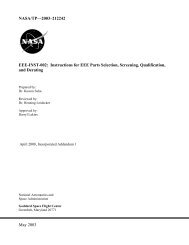

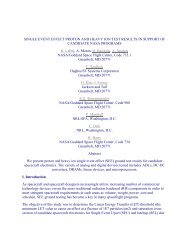
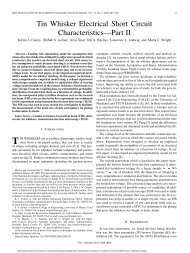
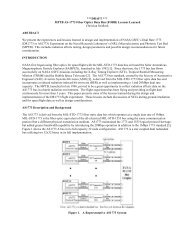

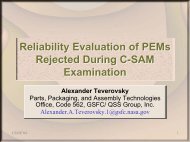
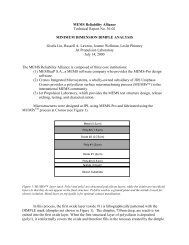
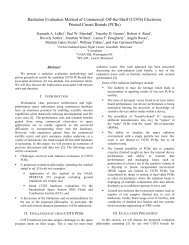
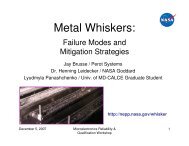
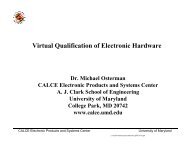
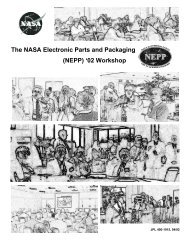

![mil-std-2223 [test methods for insulated electric wire] - NEPP](https://img.yumpu.com/4036001/1/190x249/mil-std-2223-test-methods-for-insulated-electric-wire-nepp.jpg?quality=85)